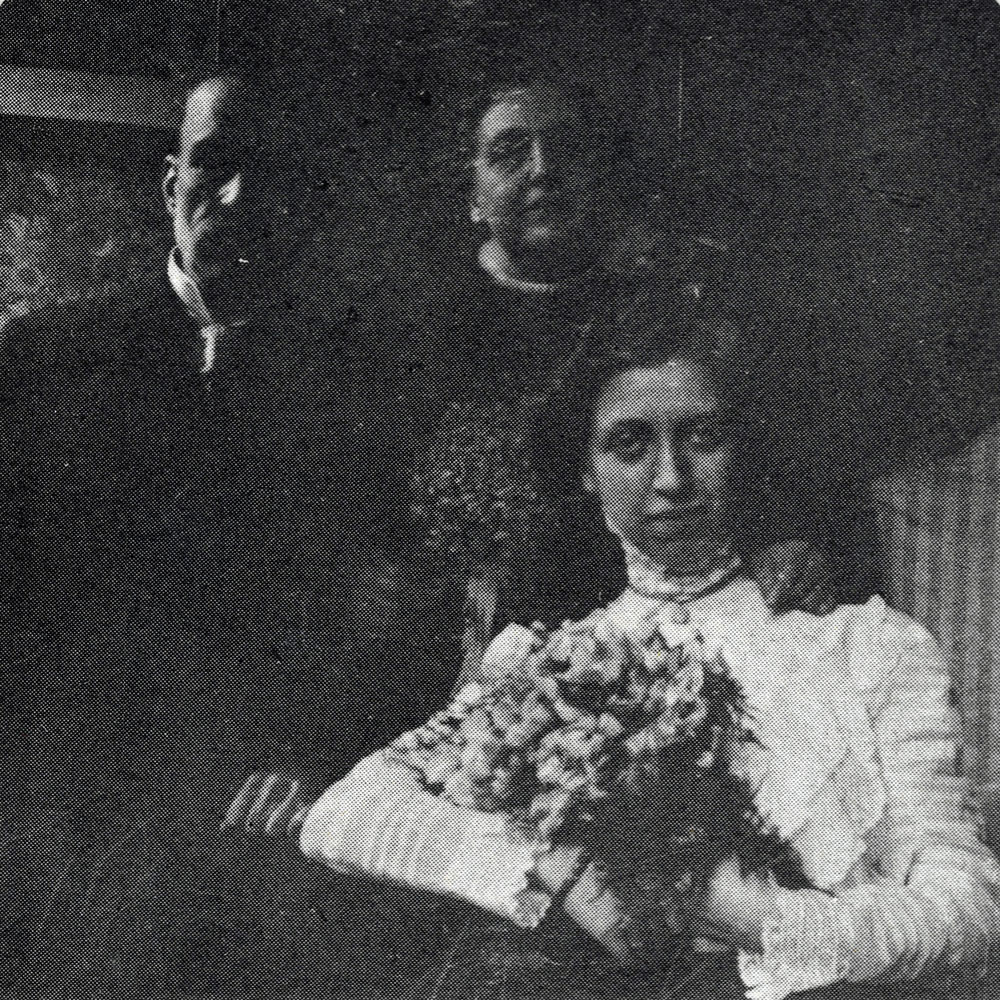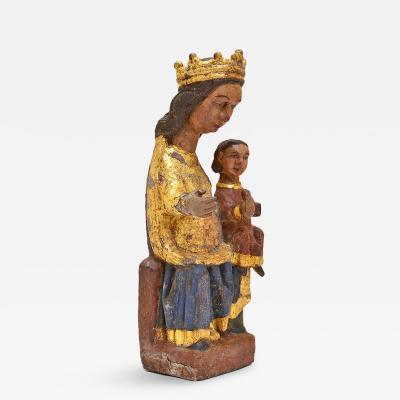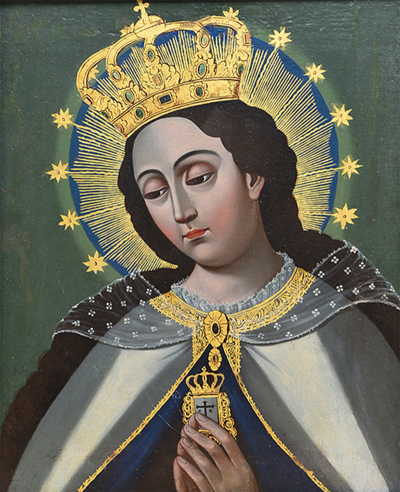Carver Samuel Robb’s Santa Claus Figure
This archive article was originally published in the Winter 2016 issue of Antiques & Fine Art magazine.
The sale of a jaunty carved and painted wooden figure of Santa Claus made in New York City by Samuel Robb in 1923 (Figs. 1, 1a) achieved international headlines in 2014 when it established an auction record price of $875,000.1 Less well known are the history of its creation and discovery, and the heartwarming story of love and reconciliation that connects it to the family of the most renowned maker of American trade figures.
The figure’s discovery and survival are due to Frederick Fried (1908–1994) (Fig. 2), the pioneering scholar of American folk sculpture and author of The Pictorial History of the Carousel (1962). While conducting research for a definitive study of American trade figure carvers, Fried sought out individuals with first-hand knowledge of the carvers.2 Interested in Samuel Robb, the proprietor of the most important carving shop in New York City during the third quarter of the nineteenth century (Fig. 3), Fried was keen to interview Robb’s reclusive daughter, Elizabeth, but was unable to locate her address. When the usual sources—city and telephone directories, census reports and insurance records—proved fruitless, he drew upon the undisputed fact that Samuel Robb had died in 1928, and that his daughter had presumably arranged for her father’s burial. He tracked down the retired undertaker and successfully obtained Elizabeth Robb’s address in northern Manhattan. Though initially reticent at being contacted and threatening to call the police, after several months of effort and letters from the Smithsonian, she finally agreed to speak with Fried and they eventually became friends. From Miss Robb, then seventy-six years old, Fried obtained a treasure trove of original photographs, archival material, and oral family history,3 but it was the last item that Elizabeth Robb shared with Fried that made the greatest impact: a unique Santa Claus figure made by her father.
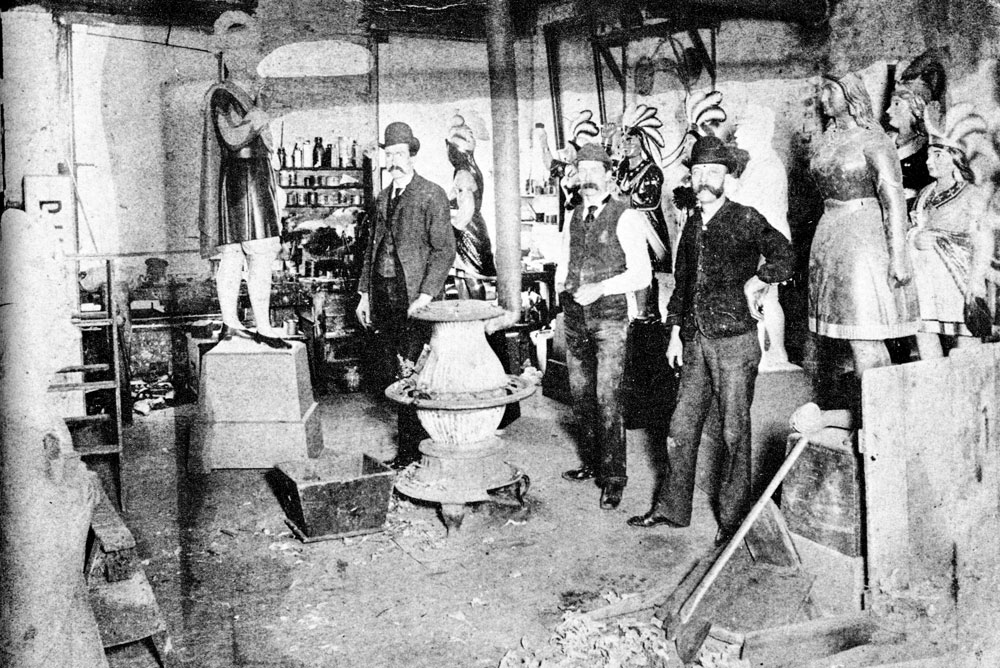
- Fig. 3: Paint room in the workshop of Samuel Anderson Robb, 195 Canal Street, New York, circa 1879. The Frederick and Mary Fried Folk Arts Archives, National Museum of American History, Smithsonian Institution, Washington, D.C. Samuel Anderson Robb is recognized as the preeminent maker of shop and cigar store figures in New York City between 1876 and 1903.
Samuel Robb was born in Manhattan in 1851, the son of Peter Robb, a Scottish-born ship carpenter who immigrated to the United States in 1841, and Elizabeth Anderson, a member of an established New York family of ship carvers. Robb’s professional career was based in lower Manhattan, where he first served a teenage apprenticeship (probably in the shop of Thomas V. Brooks) and was later employed by William Demuth, whose company manufactured and distributed wooden and metal tobacco-related advertising pieces for which Robb carved wooden models, from which the metal castings were produced. During this period Robb received a certificate in perspective drawing from the Free Night School of Science and Art at Cooper Union, in 1872, and continued with fine arts studies at the National Academy of Design. In 1876, Robb opened his first shop, at 195 Canal Street. By 1891, it had become the largest figure carving shop in New York City, with ten employees, producing a large quantity of high-quality advertising sculptures in a wide assortment of models, ranging from cigar store Indians to baseball players (Fig. 5). Between 1888 and 1903, the Robb workshop was at 114 Center Street. Over the next fifteen years Robb operated on a smaller scale at several different locations, finally setting up a small workroom in his apartment in northern Manhattan.
On October 12, 1881, Robb married Agnes Loudon, the daughter of William Loudon, a wealthy New York builder and real estate investor (Figs. 4a, b). Robb listed his occupation as “Artist in Wood” on the wedding license. After the marriage, Robb and his twenty-year-old bride moved into the home of her parents, where they lived for seven years. Forced by William Loudon to shuffle in and out of a succession of his investment properties on Madison, Quincy, and Halsey Streets in Brooklyn, the Robbs were unable to establish their own family home. Finally Robb gave his wife an ultimatum—choose between him or her father. Pregnant with their fourth child and accustomed to an indulged lifestyle, she chose to stay with her parents. Robb did not see his wife, nor the child she was carrying (Elizabeth Wilson Robb), for seventeen years, until, in 1905, the couple met by accident on a New York street, when, as recounted by Fried, “Without a word, they fell into each other’s arms.” 4 Elizabeth Robb, who regarded her father as a deserter, had planned to never speak to him, but before the day was over a complete reunion had taken place and old grievances forgiven. Reconciled, Robb moved in with his wife and teenage daughter at 329 West 21st Street, in the Chelsea section of Manhattan (Fig. 6).5 In 1910, the entire Robb family moved to West 156st Street in northern Manhattan, where Robb kept a workshop and specialized in smaller carvings.
Leading up to Christmas of 1923, Samuel Robb was secretly working on a small figure that he kept locked in a closet in his workshop. On Christmas morning, Elizabeth Robb found next to the tree a carved and painted Santa Claus (Fig. 7) holding a feather tree decorated with ornaments.6 The hollow pack on his back, filled with candles and small wrapped gifts also contained a card, “To Elizabeth, Merry Christmas, from Dad.” This was the last figure carved by Samuel Robb. He died four years later after an extended illness.
Aged 72 and retired as a professional carver for over a decade, Samuel Robb was still very much on top of his game when he made the Santa Claus figure for his daughter. A master’s touch is evidenced in the facial characterization and imaginative paintwork, with applied mica chips imparting a reflective quality to the white-painted snow accumulated on Santa’s boots, coat, and cap. Unlike the majority of Robb’s commercial figures that were displayed out of doors and weathered over time, the painted surfaces of the Santa Claus figure are nearly pristine.
A generation of younger Robb cousins regarded their elderly maiden aunt Elizabeth as a grandmotherly figure who always left envelopes with money for them tucked into the open sack on Santa’s back at Christmastime. In 1966, Elizabeth Robb sold Fried her Santa Claus for $300. She inscribed the underside of the base: “THIS IS THE LAST FIGURE MADE BY SAMUEL A. ROBB IN 1923 SIGNED ELIZABETH W. ROBB MAY 16, 1966.” In 1983, Fried placed it at auction where it sold to Ralph O. Esmerian for $44,000, and most recently in a sale of his collection at record price to a private collector.7 Since leaving Elzabeth’s hands, the figure has been in major museums, exhibitions and seminal reference books where it has been transformed from a Christmas gift to a recognized icon of American folk art.8
-----
David A. Schorsch is a nationally recognized expert in the field of American antiques and folk art. He and his business partner maintain a gallery in Woodbury, Connecticut, David A. Schorsch~Eileen M. Smiles American Antiques.
This article was originally published in the Winter 2016 issue of Antiques & Fine Art magazine, a fully digitized version of which is available on afamag.com. AFA is affiliated with Incollect.
2. The Frederick and Mary Fried research archives were donated to The Smithsonian Institution and Columbia University Library.
3. Frederick Fried, Artists in Wood, American Carvers of Cigar Store Indians, Show Figures, and Circus Wagons (New York: Bramhill House, 1970), 193–225.
4. See Fried, Artists in Wood, and Ralph Sessions, The Shipcarver’s Art, Figureheads and Cigar Store Indians In Nineteenth Century America (Princeton and Oxford: Princeton University Press, 2005).
5. Lisa Grunwald, “Avenue Arts/American Folk Art, Fred Fried’s Amusement Park Art,” Avenue Magazine (June 1982): 132.
6. Robb likely modeled his Santa Claus after images depicted in early twentieth-century holiday cards, advertising and magazine covers. By the time of the First World War this iconic representation of the jolly Santa Claus wearing the familiar white fur trimmed cap and matching red suit was fully established in our national consciousness. This now familiar rendition is frequently identified as the Coca Cola Santa. So impactful was this advertising campaign that Coca Cola adopted the colors red and white in its subsequent branding. Feather trees were a form of artificial Christmas trees that originated in Germany in the late 19th century, born out of a growing environmental concern over deforestation. Within twenty years feather trees became popular in the United States and were offered seasonally through department stores and catalogs.
7. Sold by Fried “Important American Furniture, Folk Art and Related Decorative Arts,” Sotheby Parke Bernet, October 21–22, 1983, lot 11, $44,000; Sold by Esmerian, “Visual; Grace: Important American Folk Art from the Collection of Ralph O. Esmerian,” Sotheby’s, January 25, 2014, lot 664, $875,000; purchased for a private collector by David A. Schorsch and Eileen M. Smiles.
8. The figure was exhibited at the American Folk Art Museum, in The Image Business: Shop and Cigar Figures in America, 1997–1998; American Radiance, The Ralph Esmerian Gift to The American Folk Art Museum, 2001–2002, and at The South Street Seaport Museum, in Compass: Folk Art in Four Directions, 2012.















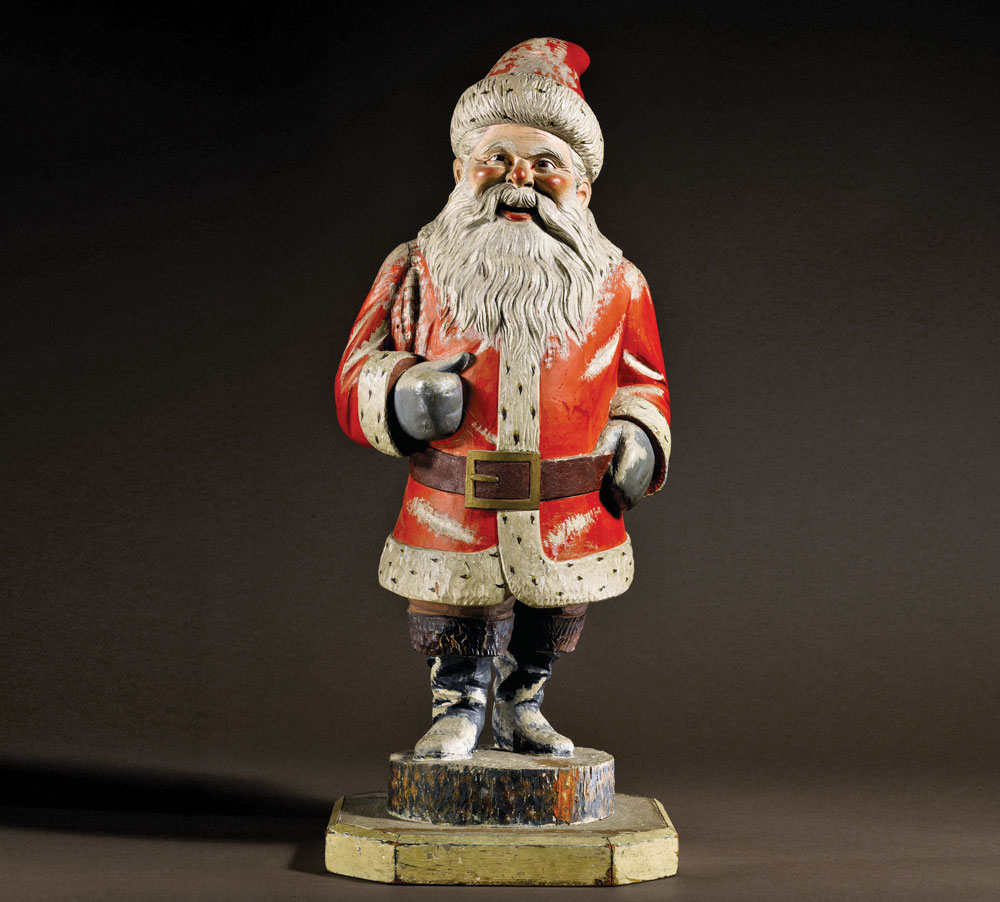
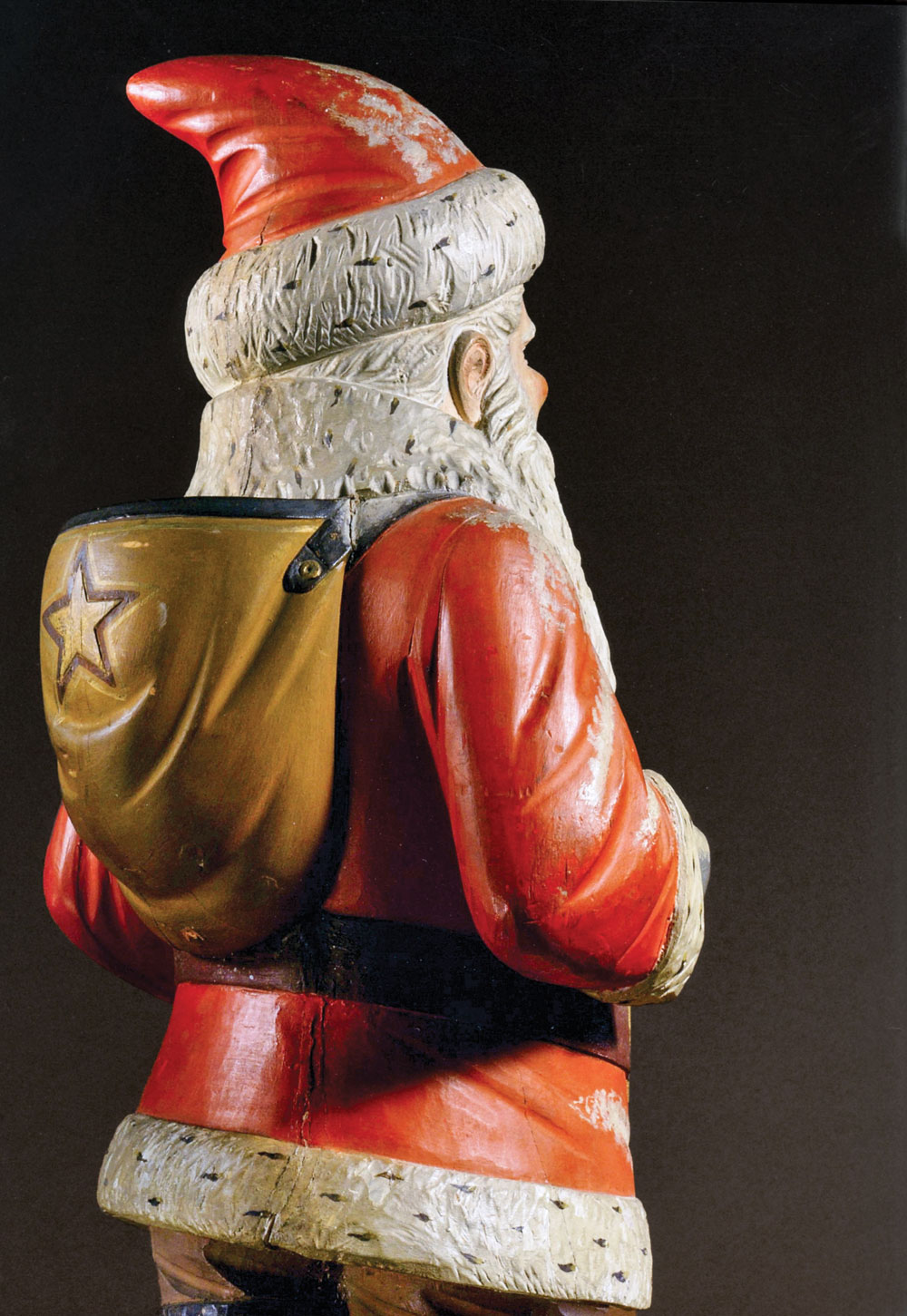

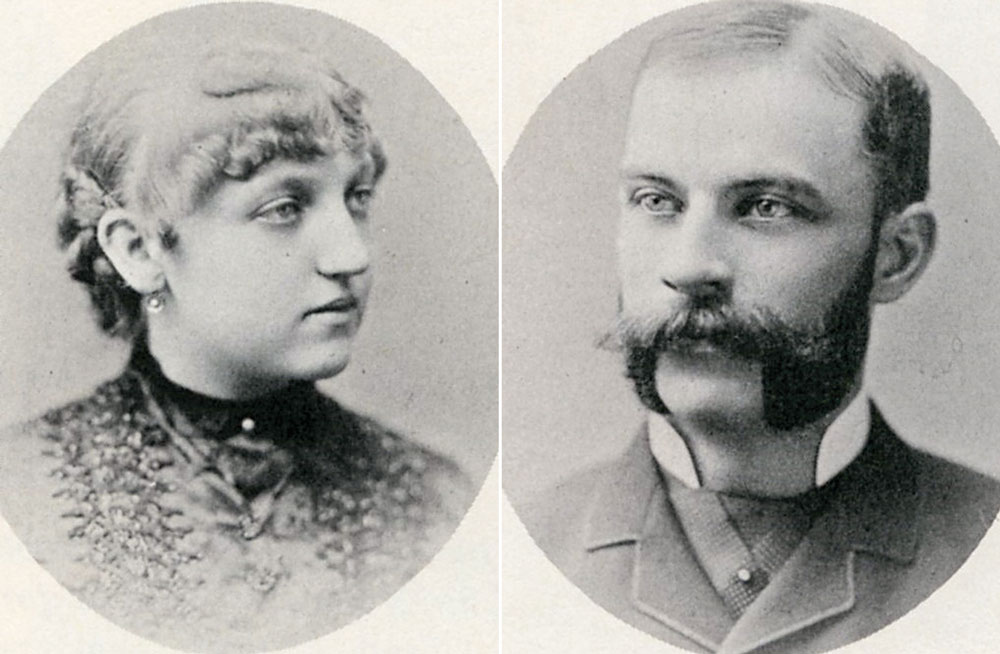
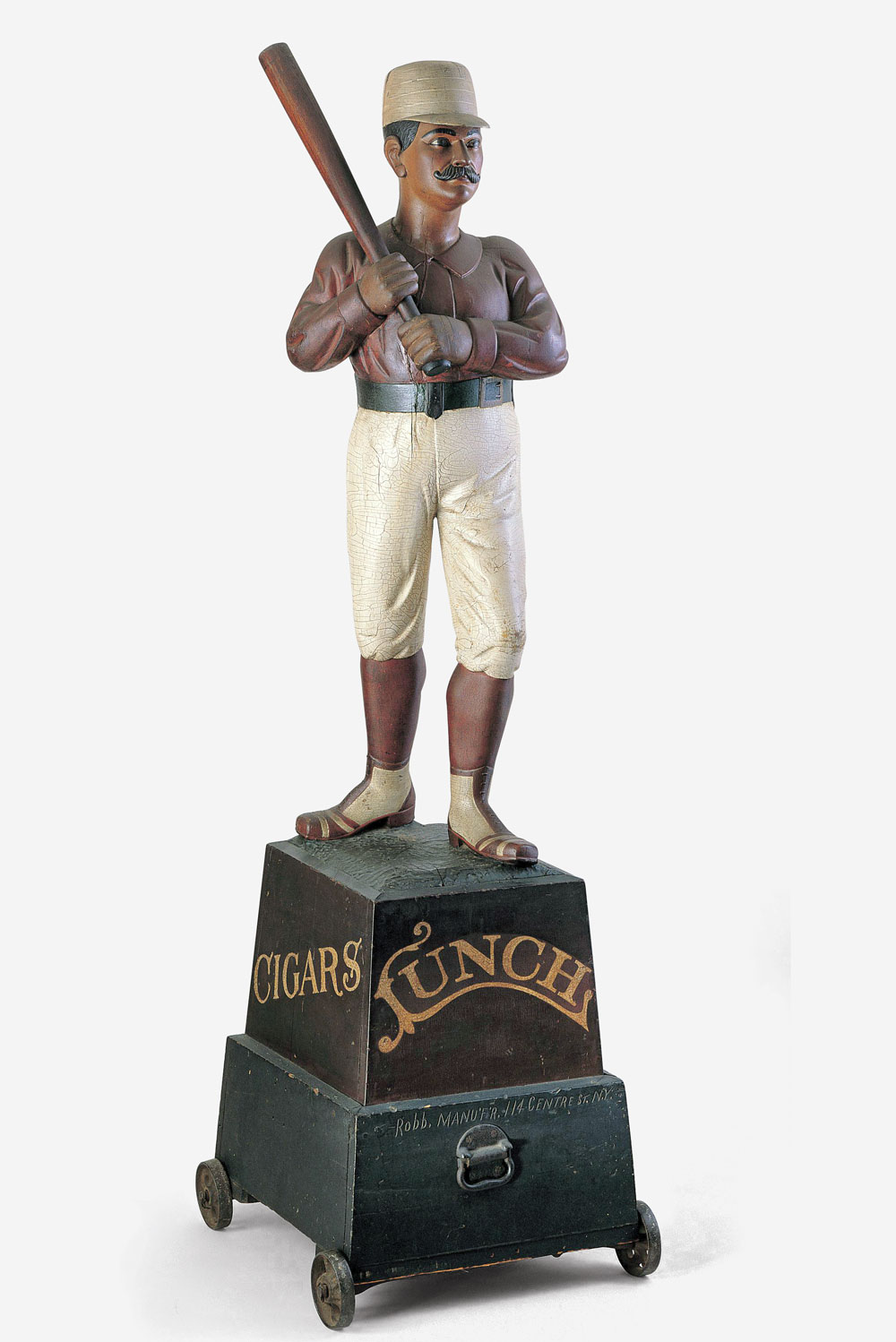
.jpg)
